Everyone knows about the manifold the healing properties of the Hypericum. This plant has long been interested in not only folk drugs, but also doctors in modern medicine. But the shrub's shrub differs from his wild "brother." It does not have such an impressive spectrum of medicinal properties, but it is inherent in much greater decorativeness. The plant in the form of large spherical bushes with spectacular colors can revive any plot and make bright colors into it. In this article, consider the distinctive features of the varieties of the Sustaine, landing rules and recommendations for the care of this plant.
St. John's wort shrub - a botanical description
- Hypericum bush branches are prone to a strong branching, give a magnificent form of the plant.
- Oval or ovate leaves St. John's wort have piece shrub edge arranged oppositely on the stem. Depending on the variety of Hypericum shrub, foliage of the plant length can vary from 1 cm to 10 cm.
- Hypericum shrub, depending on the variety, can reach a height of 1 meter.
- St. John's wort shrub blooms very showy flowers of bright yellow color. Flowers can be both large and small, but always in large numbers in the bush. In the center of a large number of long stamens, which are the real decoration colors each flower Hypericum bush located.
- the active period of flowering Hypericum bush begins in early summer. The apparent advantage of this ornamental plant is the length of bloom - about 30-50 days.
- The fruit ripens Hypericum bush in early autumn and submitted trihedral a box with a large number of small seeds inside.
St. John's wort shrub - useful properties and contraindications
In folk medicine, St. John's wort is most often used ordinary. It was there the largest number of useful substances. But the shrub species Hypericum can bring many benefits to man when properly used. This plant is rich in flavonoids, tannins, volatile, micronutrients and macronutrients, vitamins. Folk healers are advised to apply the funds on the basis of Hypericum bush under the following ailments:
- diseases of the gastrointestinal tract;
- liver disease;
- disorders of the cardiovascular system;
- urinary system diseases;
- "Female" disease;
- disorders of mental state, sleep disorder;
- some skin diseases;
- dental problems.
Most often, infusions and decoctions are preparing from the Justice of Shrunennik. Before applying such folk remedies, you will definitely consult your doctor. In some cases, St. John's wort can be contraindicated. For example, children, pregnant women and people prone to allergic reactions. Among the side effects of the use of funds with the Hunior Shrubnikov, the following can be noted:
- sudden increase in blood pressure;
- reducing the action of some drugs that are accepted simultaneously with the Hyperobe;
- weakening potency in men;
- sudden sensitivity to the sun rays;
- allergic reaction.
Thus, the cultivation of the Justice of the shrub on your site carries not only decorative value. Alone collected parts of the plant can be a good and natural tool for the treatment of many ailments.
St. John's wort - Photo
John's wort Sustained - best varieties
St. John's junior shrub "spread"
- Natural habitat - territory from Himalayas to Japan, Southeast Asia.
- Hospital shrub can reach a height of up to 1 meter.
- Shrub shoots can be a brown or red-green shade.
- The leaves of the Zvercairochoe are an oval or reversal shape and leathery surface. The average length of the leaves is 5 cm.
- Blossoms blooming with beautiful yellow colors collected in small inflorescences. A distinctive feature of colors is the presence of long stamens in the center. This feature is inherent in almost all varieties of the Hypericum.
- The period of active flowering continues about 60 days, which is a certain plus of plants.
- The fruit of the Hypericum is a trothed box with numerous seeds inside, which is revealed for next year.
- John's wort the shrubs can be multiplied with both seeds and green cuttings. The plant is unpretentious, it is best grows on moisturized and protected soils. After extinction, it is very quickly restored.
- St. John's wort is cultivated since 1862. It looks spectacular on the stony areas, in single or group landings.
St. Jurichki shrub "Gucker"
- St. John's Google is a shrub, which in natural nature is most often found in the countries of East Asia.
- Shrub is an evergreen plant, which is capable of reaching a height of up to 1 meter.
- The bloom of the hunter is not too long. It comes at the end of July and ends in mid-August.
- This kind of shrub of the Hypericum has low winter-hardy characteristics. Growing in the regions with cold winters is possible only subject to the creation of shelter by the plant.
- The fruit of the hunter is a leathery box with seeds inside, maturing at the beginning of autumn. Shrub starts fruit after 3 years.
St. Justice Shrub "doublistic"
- The second name of the two-sided shrub of the Hypericum is a crusty.
- Filtering shrub hunting prefers to grow in the gorges, on the stony slopes of the mountains, as well as in the forests.
- In the wild, it is most often possible to meet in the Caucasus, in Western Europe and Asia Minor. In Russia, this kind of shrub of the Hypericum is not too popular, as it does not have sufficient winter-hardy characteristics.
- This type of shrub of the Hypericum is also a first-hearthovene. With a comfortable growth, it can reach 1.5 meters in height.
- St. John's wort is not so long as his "brothers". You can admire spectacular yellow colors from mid-June to mid-July.
- Leather box with seeds inside begins to form on plants that are over 3 years old.
John's wort Sustained "Hidcot"
The favorite grade of the shrub hormour among the gardeners has the following characteristics:
- john's wort Hidcote grows compact and low bush. Height it reaches 1 meter and in diameter also 1 meter;
- the huge plus of this type of shrubnikoy hormone is that the period of active flowering lasts from the beginning of the summer and until October. Such characteristics can boast not every decorative plant;
- hyperician Hidcot flowers have a bright yellow color, but look a little less volumetric than other varieties;
- st. Cruise Hidcot - a plant is unpretentious both to the soil and to lighting. It can grow on dry soils, acidic, alkaline, weakness soils, on the lit places, in a half. Shrubs of this variety are not too fond of moisture stagnation, so when landing needed special attention to creating a good drainage layer;
- julcy shrub Hidcot is valued for their high decorative qualities and unpretentiousness in cultivation. It can grow both in single landings and in group. Gardeners prefer to allocate the place of this shrub in Alpinaria, Version Garden.
St. John's furies "Brigadun"
- St. John's wort is a low shrub. Reaches a height of 30-40 cm.
- A distinctive feature of this kind of shrub of the Hypericum is the color of leaves. They have a brilliant and smooth yellow-green color. Leaves of the shrub oblong shape.
- Flowers a short brigal shrub with small flowers of bright yellow color. They abundantly decorate the St. John's wort at the beginning of the spring.
- A variety of shrub hormour Brigadong maximizes all its decorative qualities on dry soil with a good drainage layer. The plant also prefers open and sunny sections.
St. John's furious "cup"
- St. John's whirlpool is an evergreen variety of shrubgery, often found in natural nature in Greece, Turkey, Bulgaria.
- Shrub is quite unpretentious. It can grow both at open solar sections and in a half.
- The plant reaches 50 cm in height.
- The shoots of the beasts of cupboy spread, with a reddish bark.
- Oval shape leather leather leather and seats. They can reach up to 7 cm long.
- A distinctive feature of this variety of shrubnika hormour are large flowers of juicy yellow color. They reach 6-7 cm in diameter. You can admire the spectacular blossom of this unpretentious shrub throughout the summer.
- In the center of each flower there is a huge number of long stamens, which gives the colors an incredibly lush appearance.
- The fruit of a cupboy is a leathery box with small seeds inside, which reaches 1 mm long. The ripening of fruits occurs in October.
St. John's wort - landing and care
Landing of the Sustainan Sustaine
- If you decide to plant a shrub hbrunnik in your site, then you must first decide on the landing site. The plant although it is unpretentious, but the brightness of the colors and the pomp of the bush itself reaches the maximum under certain conditions. Almost all the Vyverka shrubs prefer to grow on well-lit places. Landing is also possible in half. It is desirable that the place of growth of the Zverboard was protected from winds and drafts. Plant, like most decorative shrubs, prefers protected soil.
- John's wort the shrub is an absolutely unpretentious plant. If sand and dry soil prevails on your site, this is the perfect option for planting this decorative shrub. The bertoy grows on loose, dry soils, on neutral soils or low acidity soils. Some varieties of the Shrune Hypericum need a good drain layer. This is especially important for sites where groundwater fit too close to the surface of the Earth.
- The easiest and loved by many gardeners is a way to plant a shrub man - landing with cuttings. Cuttings you can prepare yourself or purchase in specialty stores. The cutlets you need to simply put on 14 days in the container with clean water. At the expiration of this period, the cuttings will appear roots.
- After the appearance of the roots of the cutlets, it is necessary to prepare containers for planting a hormour. It can be a small pot, which should be filled with a mixture of sand and peat in a 1: 1 ratio.
- Stalks of the shrub hormone will winter in these pots all winter. You will need to regularly water the plants, prevent the removal of the earthen koma, but also not to overcoat the St. John's wort.
- In the spring, you can transplant the grown cuttings in the open ground at a permanent point of growth. Drop a small hole, on the bottom of which you need to pour the drainage layer and the layer of humus.
- Place the young St. John's wort to the center of the pits and suck it with the roots with soil. On Blowing Plant Too much. It is enough that his root system will be covered with soil. Seal the Earth around the hormour of the shrub and pour.
If all the landing rules were correctly observed, and the conditions will be comfortable for the plant, the flowering will come in the same year.
Rules for the care of the beast of shrubnikov
You coped with the landing of the hunter of shrub in their plot. Now you need to care for the plant. There will be even novice gardeners with this, as the shrub is unpretentious in care. Consider its main care preferences:
- watering. Most varieties of shrubs are preferred by a moderate watering mode. It is not necessary to overbid a plant, but it is also impossible to allow oveurgement. Water the shrub as the soil drying around it. If the weather is too dry and hot, then it is permissible spraying the above-ground part of the plant. Especially this is loved by young bushes of the Hypericum;
- weeding. As with any other decorative plant in your garden, the hunter is needed regular weeding. It will create a beautiful, well-groomed and healthy view of your landing. Wearing grass often acts as a carrier of diseases and pests. This is another reason for the regular removal of weeds around the Hypericum;
- feeding St. John's wort will delight you with yellow colors even if you do not feed it. But the periodic introduction of mineral fertilizers will contribute to more lush flowering and accelerated growth. Experienced gardeners note that the plant responds positively to nitroposk;
- regular inspection of shrub. Like any decorative plant in the garden, the shrub hunting is desirable to regularly inspect. It is necessary to notice the first signs of the disease and traces of pests on the bush. As the Hypericum grows, dry leaves and flowers can appear, which must be deleted in a timely manner, so as not to spoil the appearance of the shrub;
- trimming. St. John's wortrer requires 2 trimming per season. In the spring, as a rule, frozen shoots are trimmed. Do not worry if too much shoots suffered after the winter. Shrub is very quickly restored. Autumn remove old shoots damaged. If the shrub trouser was planted in order to form a living hedge, then it can be trimmed as it grows;
- preparation for winter. Most of the species of the Shrune Hypericum have good winter-hardy characteristics. Well, it is better to prepare a plant for winter if it is expected too harsh. Soothes need to cut the maximum. The remaining overhead part of the bush should be covered with dry leaves, straw or other material.
Methods of breeding of a shrub
Some gardeners mistakenly believe that due to their unpretentiousness, John's junior shrub can grow in the same place for many years. But this is not so. After 3-5 years of growth in one place, the plant begins noticeably "cracking", lose its decorative qualities. To avoid this, the plant needs to be multiplied. Consider the most popular ways.
The reproduction of the shrub of Hypericum seeds
- It is not very convenient to multiply by Zvemya, as the seeds are very small, and they need to be sowed from each other.
- The seeds of the Justice of the Shrubborn can be sowing both early in the spring and very late autumn before the onset of frosts.
- The seeds of the shrubs are planted on the prepared soil, where they will grow and "grow up" for several years. Only after this term, young plants are planted for permanent growth places.
- The seeds of the Justice of Shrub germinate in the ground, which heated to 5 degrees.
- Modifying the St. John's wort can be and seed in the cultivation of seedlings. Put nutritious soil in containers and pour it. Seeds need to be laid from above, slightly sprinkled with sand. The planting container needs to be covered with glass or polyethylene and remove into a dark cool place. After the appearance of the long-awaited shoots of the Hypericum, you need to wait about 2 months to bring them on the light. Now they can be switched. Observe the moderate watering mode of the young Hypericum. In the late spring, seedlings can be planted in an open ground.
The reproduction of the shrub from the drafts
- Johscoy shrub is remarkably multiplied with cuttings, cut in spring. They are put in the container with clean and warm water and wait for the appearance of roots. Then the cuttings are planted into containers with the prepared soil, where they will "grow up" and winter. In the spring of next year, the cuttings can be planted at a permanent place of growth in the open ground.
- John's wort the shrub can be multiplied with cuttings cut in autumn. Choose for cutting young shoots that need to be put in a wet soil in the greenhouse. It is advisable to apply landing. In the spring, when the cuttings are already well rooted, it can be transferred to a permanent place of growth.
The reproduction of the shrubgery of the Justice division of the bush
Despite the fact that most of the sorts of Shrune Jeveron have a pretty magnificent form, its root system does not differ in large sizes. But the shrub is still equal to the propagation of the division of the bush. Prepare a landing pitch for a new plant. Place the drainage layer and layer of humus mixed with mineral fertilizers there. Carefully dig a hunter's bush, divide it into as many parts, as follows. Pour a new plant.
St. John's wort - pests and diseases
Almost all the varieties of the Justice of Shrub have good resistance to disease and pests. But sometimes such problems still arise. To predict all the causes of disease and the invasion of pests on decorative shrubs is impossible. Perhaps irregular weeding, late watering or "overflows" and are the main factors. Among the diseases that can affect plants can be allocated:
- rust. If you have noticed on the leaflets of the shrubs characteristic yellow or orange specks on the leaflets, it may well be rust. Bushes slow down their growth and development. How to deal with this ailment? The affected leaves need to be deleted in a timely manner and burn. The rest of the plant must be treated with a fungicide, which can be found in a specialized store without problems;
- fungal disease. This type of diseases most often overtakes shrubs, which are often "poured" with water. Too raw and wet weather can also contribute to the infection of the plant. In a timely manner, inspect the bushes of the Hypericum, if necessary, to begin urgent processing of fungicides.
Among the pest insects, which can settle on the beast of shrub, can be listed:
- hyperic mole. The insect is striking most often the tops of the shoots;
- lapticket. Caterpillar with the help of a web envelop the leaves of the Hypericum, its flowers and the tops of the shoots;
- tRIPS. It is very easy with modern insecticidal means to deal with this pest.
If you grow by John's wort the shrub for medicinal purposes, it is impossible to use any chemicals to combat diseases and pests. The best protection of the decorative bushes of the Hypericum is a regular inspection of plants and compliance with all recommendations for landing and care for the Hyperobe.
If you are in finding a beautiful, spectacular and unpretentious plant for your site, then you will definitely pay your attention to the varieties of the shrub. Beginner gardeners will also easily grow this plant. St. John's wort will fit perfectly to create a living hedge. An amazing combination of bright yellow colors against the background of juicy green foliage every time involuntarily attracts eyes.

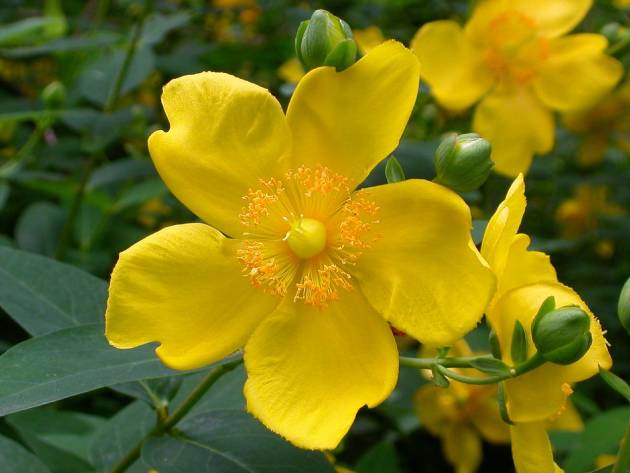
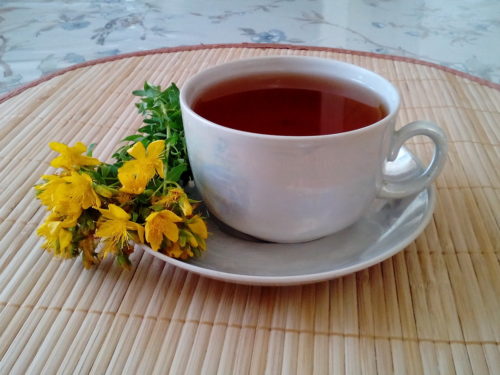

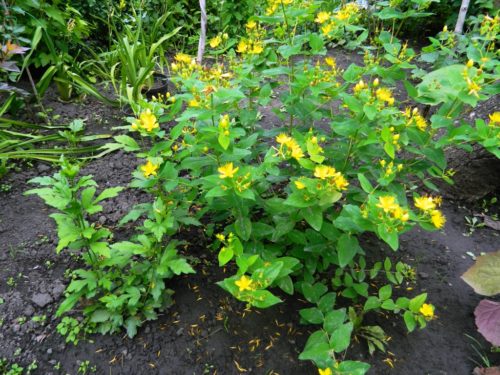
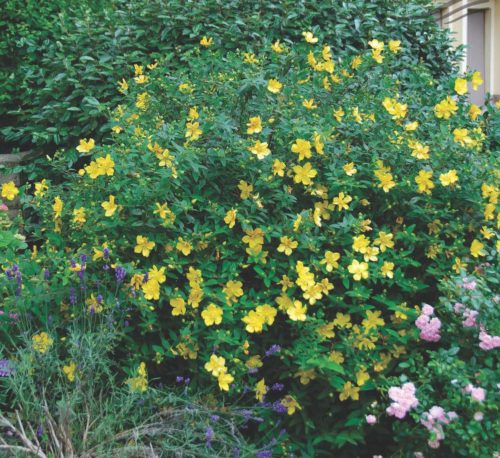
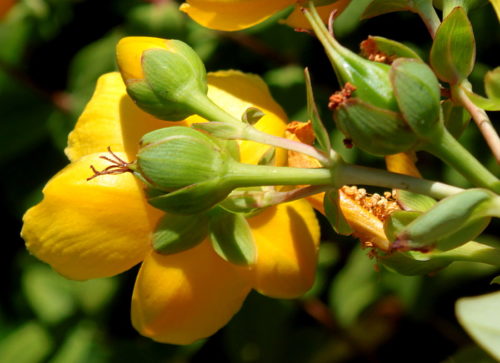
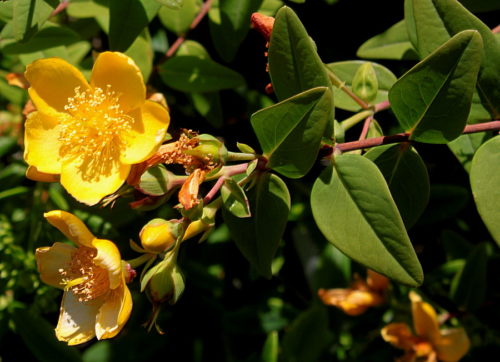
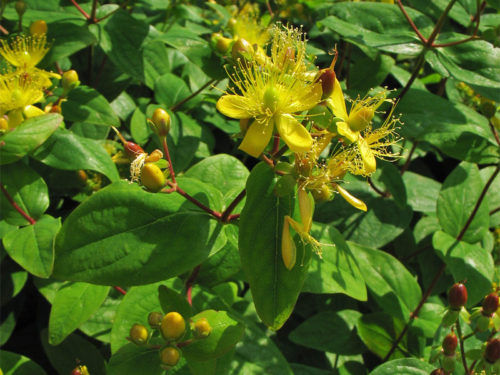
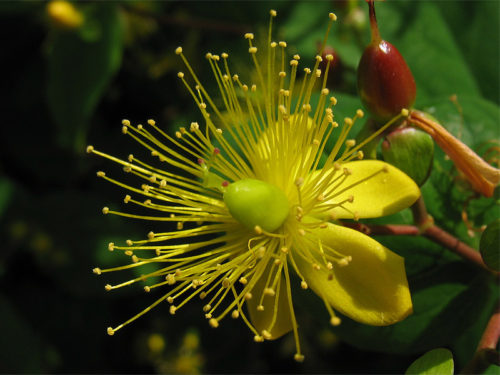
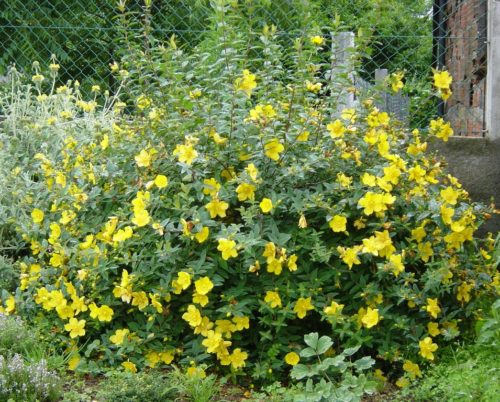
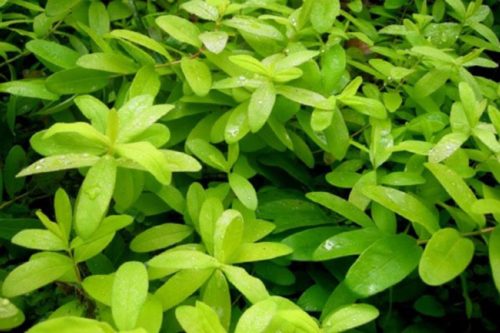
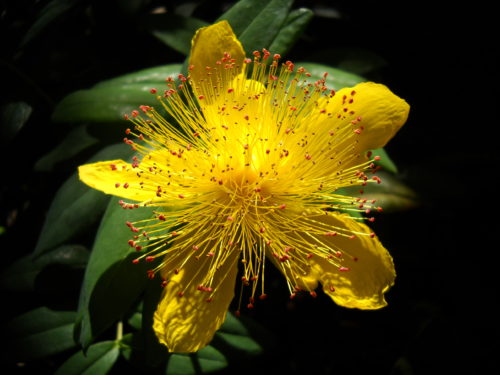
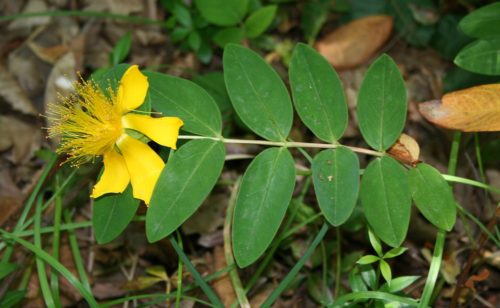












 Start a discussion ...
Start a discussion ...